NZXT Switch 810: When Too Much Isn't Enough
by Dustin Sklavos on February 1, 2012 7:00 AM EST- Posted in
- Cases/Cooling/PSUs
- NZXT
- Full-Tower
- Switch
Noise and Thermal Testing, Stock
While everything up until this point has gone smoothly, those of you who remember my admonishing NZXT for not including a proper fan controller are going to see how costly that mistake on NZXT's part really is. I tested the Switch 810 with the top vent closed (for silence) and the internal fan directed at the GTX 580.
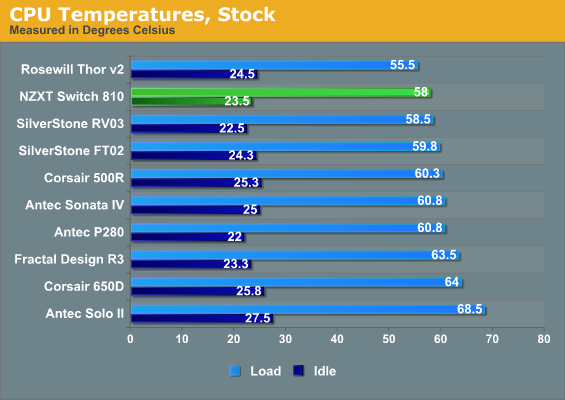
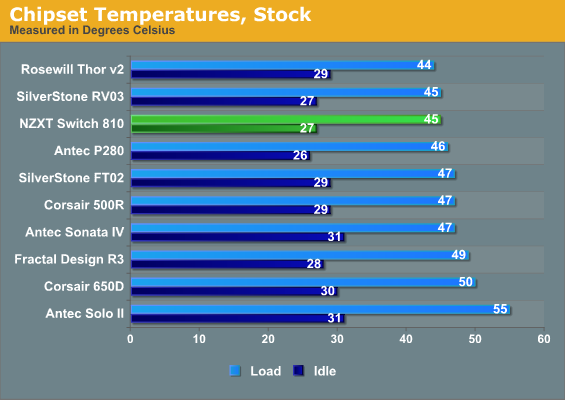
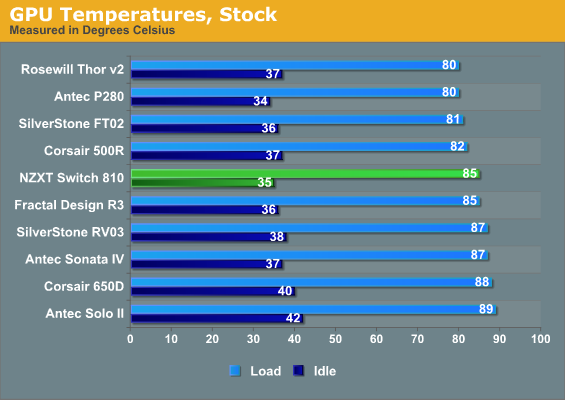
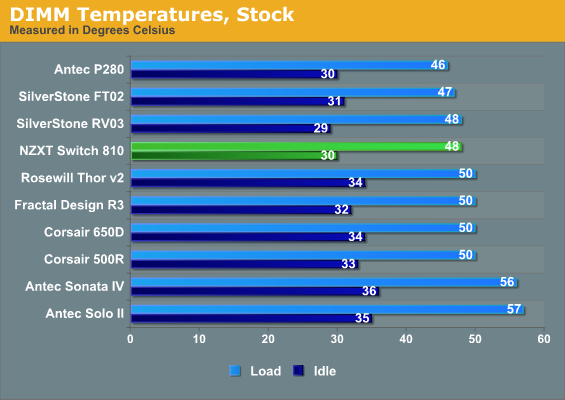
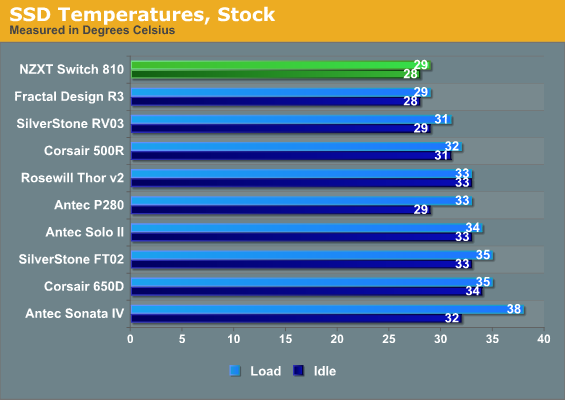
The NZXT Switch 810's thermals are quite good, but they're not stellar. Our stock settings are really on the mild side for a case like this, but I want you to note that the directed fan actually seems to have the opposite effect of what was intended on the GeForce GTX 580: the card is actually running hotter under load than it would in the other enclosures.
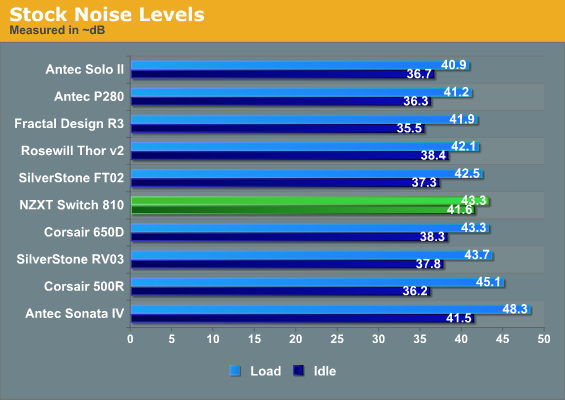
Unfortunately, while many of the other enclosures can produce thermal performance on par with the Switch 810, they also all beat it soundly (pun wholly intended) at idle temperatures and most of them are quieter under load to boot. Almost every other case here enjoys some level of fan control, and the lack of it in NZXT's enclosure is noticeable.










29 Comments
View All Comments
Zstream - Wednesday, February 1, 2012 - link
That has better noise control?TerdFerguson - Wednesday, February 1, 2012 - link
Looking at the construction materials, design, etc, I just don't understand how this needs to be selling at $170. Is the price set merely to differentiate from other products? Can't some researcher actually find out what it costs to manufacture such a case? THAT is what I'd like to read. Ditto for motherboards.Morg. - Wednesday, February 1, 2012 - link
Speaking about the price tag ... Why not get a HAF X instead ? I mean there's a bunch of more interesting features, better cooling ... I think NZXT missed the point with this one.And on the other hand .. you can get so much quieter with other cases/. meh.
domezone - Saturday, February 4, 2012 - link
Attempting to justify price tags on logical points such as material costs as well as labor costs is illogical. Any amount of overhead or other middle men taking a cut will raise the price. Beyond a middle man and direct from the manufacture still leaves an overly inflated price point. This is not just for this product unfortunately, I wouldn't assume there are many products or services that actually cost what it costs the company + small amounts of profit.Though if you had questioned a company *any amount of questioning before breaking an arm off in court* the costs would be directly based on employee wages and materials with very modest markups. Guess the research and development costs need to be offset so a computer case set the company back $170 per unit....
no grammar hawks please I know I make errors
cjs150 - Wednesday, February 1, 2012 - link
This is a case designed for watercooling rigs. Massive room up top, and only a little bit of changing allows for a radiator in bottom.The lack of fan control is not a major issue. Lots of motherboards have built in fan control and if all else fails buy a separate controller - not exactly expensive.
My problem with this is simply that it is overpriced and nothing original. Simply example. If case is 235mm wide, would it be better to instal the PSU at tight angles (Lian Li have tried this) rather than conventionally? Makes for neating wiring.
I wonder if NZXT will follow with a smaller case (Switch 610 maybe)
danchen - Wednesday, February 1, 2012 - link
storm trooper !Iketh - Tuesday, February 7, 2012 - link
+1danacee - Wednesday, February 1, 2012 - link
I do not know why they insist upon mounting the PSU on the bottom sucking off the ground, but like bottom mounted freezers on trendy fridges and flat keyboards; it is moronic.Obviously just another cheap ploy to rip off Apple's Powermac and Mac Pro, who unlike these stupid asinine idiot me too PSU case makers; keep the PSU from sucking dirt off the ground and blowing up.
Impulses - Wednesday, February 1, 2012 - link
I believe the idea is to keep it away from the hotter areas (CPU/mem), since hot air rises anyway... Most cases have bottom filters and many users simply don't plant their cases on the floor.I'm not saying I agree with that logic, on a gamer's case the bottom location is bound to be as warm as anywhere else due to the GPU(s), although GPU are under load less often than the CPU (unless the system's used strictly for gaming).
It does seem odd to me that bottom PSU placement is almost universally favored now considering its sometimes a wash as far as temps and it can complicate wiring, but maybe I'm just rationalizing.
Impulses - Wednesday, February 1, 2012 - link
Personally I really dig Silverstone's 90 degree designs, but I haven't gotten around to trying one of them first hand. They're not the most flexible, since they complicate cable management even more and they're not really efficient if you're not using high powered or back vented GPUs, but for a gaming case it seems like the ideal solution... Kind of what BTX should've been.